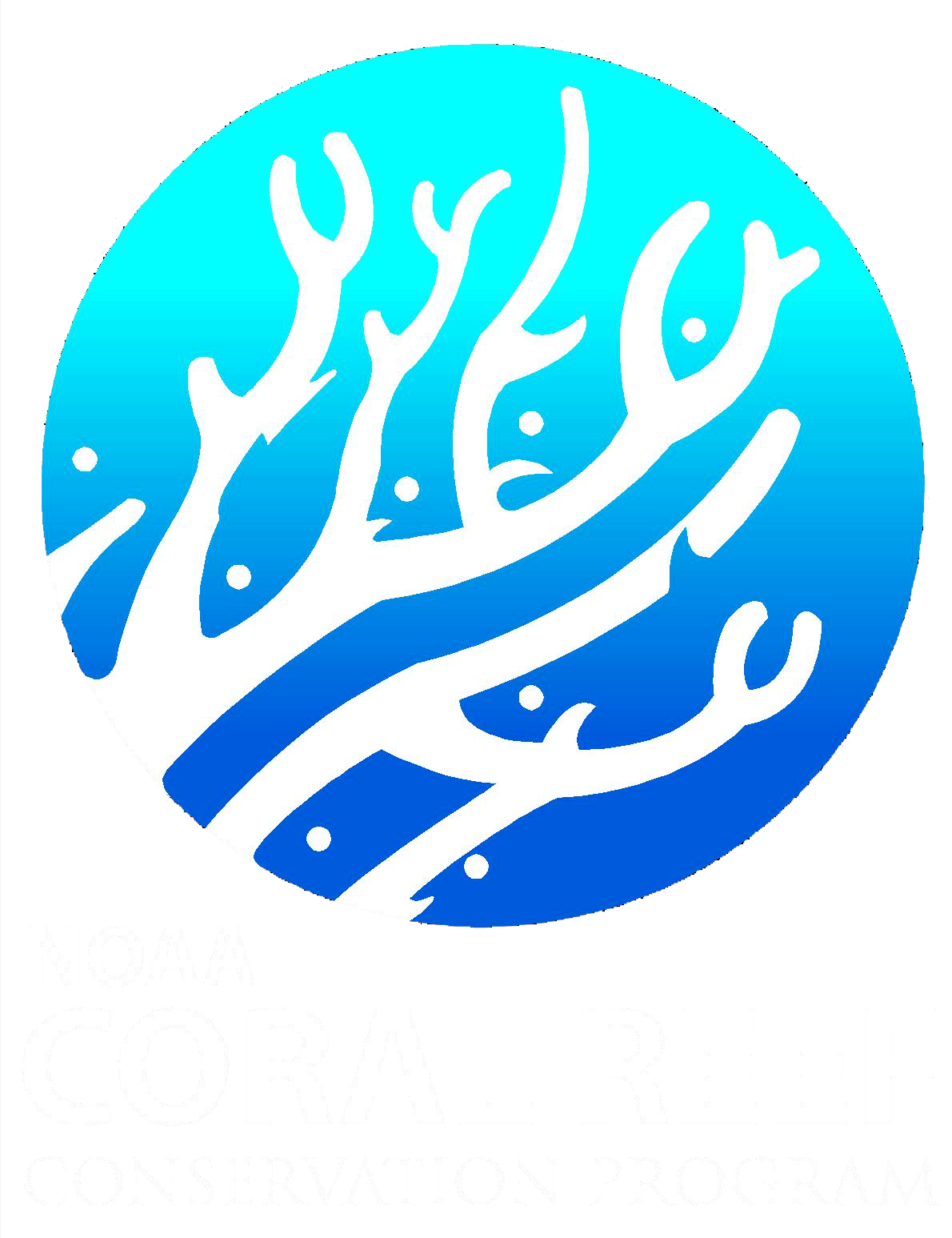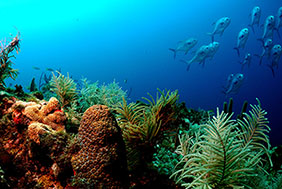Featured Archive - 2023 Publications
Below is a sampling of publications generated by NOAA's coral ecosystem activities in 2023. To access a complete list of NOAA coral ecosystem related publications, use the CoRIS Geoportal
(https://www.coris.noaa.gov/search/) search tool.
NCCOS and partners are using large-area imaging (LAI) to monitor shallow water coral reefs and restoration. Now, they've published a guidance document outlining standard operating procedures and concepts of photogrammetry (the science of making measurements from photographs), so members of the coral reef research and restoration community can apply these techniques as well.
The Socioeconomic Component of the National Coral Reef Monitoring Program (NCRMP) gathers and monitors a collection of socioeconomic data in seven U.S. coral jurisdictions. The team continued its second monitoring cycle with data collection in American Samoa in 2021, and recently released their report of summary findings along with two new infographics. The report outlines current human dimensions information relevant to coral reef resources in American Samoa, as well as trends between the first (2014) and second monitoring cycles.
Nauru is one of the smallest countries in the world, consisting of just a single island a few miles wide near the Equator in the Pacific Ocean. It is surrounded by coral reefs made up of reef-building coral species, many of which are difficult to identify even by experts. This field guide to nearly 50 species of the most common corals on Nauru provides a resource for coral reef scientists, managers, monitoring teams, and anyone else interested in learning about reef-building corals. Corals are presented in the conventional taxonomic order, because it puts corals that are morphologically similar together, which facilitates learning to distinguish them. A few modifications of that order have been introduced to help put similar looking species closer together. This guide presently has 48 coral species in 19 genera.
Tonga has over 170 islands with some of the most extensive coral reefs in the South Pacific. The archipelago is home to hundreds of reef-building coral species, many of which are difficult to identify even by experts. This field guide to nearly 200 species of the most common corals in Tonga provides a resource for coral reef scientists, managers, monitoring teams, and anyone else interested in learning about reef-building corals. Corals are presented in the conventional taxonomic order, because it puts corals that are morphologically similar together, which facilitates learning to distinguish them. A few modifications of that order have been introduced to help put similar looking species closer together. This guide presently has 171 coral species in 56 genera.
Fiji consists of over 330 islands with some of the most extensive coral reefs in the Indo-Pacific. The archipelago is home to hundreds of reef-building coral species, many of which are difficult to identify even by experts. This field guide to over 200 species of the most common corals in Fiji provides a resource for coral reef scientists, managers, monitoring teams, and anyone else interested in learning about reef-building corals. Corals are presented in the conventional taxonomic order, because it puts corals that are morphologically similar together, which facilitates learning to distinguish them. A few modifications of that order have been introduced to help put similar looking species closer together. This guide presently has 224 coral species in 62 genera.
Wake Island, also known as Wake Atoll, is an isolated coral atoll in the western Pacific Ocean. The island is a U.S. territory used by the U.S. Air Force. The surrounding marine areas are part of the Pacific Remote Islands Marine National Monument and are home to over a hundred species of reef-building corals, many of which are difficult to identify even by experts. This field guide to some of the most common corals of Wake provides a resource for coral reef scientists, managers, and monitoring teams working on the island. Corals are presented in the conventional taxonomic order, because it puts corals that are morphologically similar together, which facilitates learning to distinguish them. A few modifications of that order have been introduced to help put similar looking species closer together. This guide presently has 79 coral species in 27 genera.
Palau consists of over 300 islands with some of the most extensive coral reefs in the Indo-Pacific. The archipelago is home to several hundred species of reef-building coral species, many of which are difficult to identify even by experts. This field guide to some of the most common corals in Palau provides a resource for coral reef scientists, managers, monitoring teams, and anyone else interested in learning about reef-building corals. Corals are presented in the conventional taxonomic order, because it puts corals that are morphologically similar together, which facilitates learning to distinguish them. A few modifications of that order have been introduced to help put similar looking species closer together. This guide presently has 164 coral species in 54 genera.
The Federated States of Micronesia (FSM) consists of over 600 volcanic islands and coral atolls with some of the most extensive coral reefs in the Indo-Pacific. The archipelago is home to several hundred species of reef-building coral species, many of which are difficult to identify even by experts. This field guide to some of the most common corals in FSM provides a resource for coral reef scientists, managers, monitoring teams, and anyone else interested in learning about reef-building corals. Corals are presented in the conventional taxonomic order, because it puts corals that are morphologically similar together, which facilitates learning to distinguish them. A few modifications of that order have been introduced to help put similar looking species closer together. This guide presently has 80 species in 24 genera.
The Samoan Archipelago in the South Pacific consists of 18 islands surrounded by coral reefs and divided politically into Independent Samoa in the west and the U.S. Territory of American Samoa in the east. The archipelago is home to several hundred species of reef-building coral species, many of which are difficult to identify even by experts. This first-ever field guide to the corals of Samoa provides a resource for coral reef scientists, managers, monitoring teams, and anyone else interested in learning about these fascinating organisms. This is a field guide for the identification of 217 species in 62 genera of hard or stony corals.


